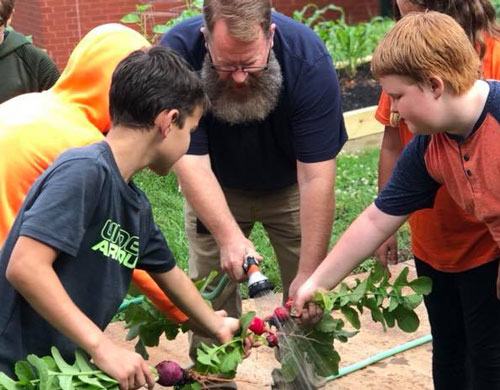Cultivating Young Minds Through SC Farm to School
By taking advantage of the program’s resources, teachers can transform their classrooms into engaging environments where students actively participate in learning about where their food comes from. Whether it’s through hands-on gardening, curriculum-based activities, or exploring local farms on field trips, teachers play a vital role in shaping students’ understanding of healthy eating and the importance of local agriculture.
This program offers teachers a wealth of support, including a monthly curriculum, classroom activities, a lending library and a garden toolkit. Teachers engage students in taste tests and outdoor explorations to spark student curiosity and enhance learning. By participating in Farm to School, teachers can not only enrich their students’ learning, but also connect with the community and contribute to a more sustainable future.

Benefits of Farm to School in the Classroom
Farm to school enhances the connection schools and communities have with fresh, healthy food and local growers. By changing food purchasing practices, students gain access to healthy, local foods, as well as education opportunities such as school gardens, cooking lessons and farm field trips.
- Provides hands-on learning experiences, making education more interactive.
- Teachers can integrate the program into various subjects using resources like the monthly curriculum.
- Students gain an understanding of where their food comes from.
- Students develop important motor skills.
- Promotes community and student-teacher connections.
- Promotes healthy eating habits and encourages students to try new fruits and vegetables.


